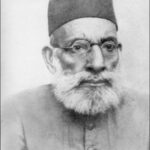Mangal Pandey: The Brave Revolutionary Who Sparked India’s First War of Independence
Mangal Pandey, a name that reverberates with courage and sacrifice, remains a symbol of the spirit of revolt in India’s long struggle for independence. Though his life was short-lived, the impact of his actions and the courage he displayed on the battlefield ignited the flames of rebellion against British colonial rule. Mangal Pandey is remembered not only as a soldier but as a hero who sparked the First War of Indian Independence in 1857, a pivotal event that altered the course of India’s history.
Early Life and Background
Mangal Pandey was born on July 19, 1827, in the small village of Nagwa in present-day Uttar Pradesh. He hailed from a Brahmin family and had a modest upbringing. Growing up, Pandey was a deeply committed individual who exhibited a sense of duty and discipline. At the age of 18, he joined the British East India Company’s army as a sepoy, hoping to earn a living while serving his country.
Pandey, like many other soldiers, had a difficult life in the British army, enduring harsh discipline and poor conditions. He was part of the 34th Bengal Native Infantry Regiment, stationed at Barrackpore near Calcutta (now Kolkata). It was here that his life would take a momentous turn, making him one of the most important figures in India’s history.
The Rebellion of 1857 and Mangal Pandey’s Role
The British had introduced new cartridges for the Enfield rifles in 1857, which were rumored to be greased with animal fat—both pig and cow fat. This caused widespread outrage among the sepoys, particularly because both Muslims and Hindus were forbidden from consuming these substances due to religious beliefs. The issue became the tipping point for a larger rebellion that had been brewing for years due to the oppressive policies of the British.
On March 29, 1857, Mangal Pandey, alongside his fellow soldiers, protested against the use of these cartridges. When ordered to load and fire the new rifles, Pandey refused, citing the issue of religious offense. The British officers, however, did not take his objections seriously and ordered him to be disarmed and arrested. This led Pandey to take a bold step—he attacked a British officer and shot him dead. He also injured another officer and attempted to incite the other soldiers to rise in rebellion.
Pandey’s actions on that fateful day marked a turning point in the Indian resistance against British rule. His actions emboldened many, and his revolt quickly spread among the sepoys, eventually leading to the uprising in Meerut, which grew into the first major battle of the Indian rebellion of 1857, also known as the Sepoy Mutiny.
Arrest, Trial, and Martyrdom
After his act of defiance, Mangal Pandey was quickly apprehended by the British forces. He was court-martialed and sentenced to death. Despite being in the custody of the British, Pandey displayed an unshakable resolve. Even during his trial, he remained defiant, refusing to accept any apology for his actions. Pandey was executed on April 8, 1857, at the age of 29, just days before the outbreak of the full-fledged rebellion.
Mangal Pandey’s martyrdom became a symbol of courage and resistance against colonial tyranny. His bravery inspired countless others to join the ranks of the rebels. Although the 1857 uprising did not lead to immediate independence, it marked the beginning of a more widespread nationalistic movement against British rule, which would eventually culminate in India’s independence in 1947.
Daily Life and Impact on Society
Though Mangal Pandey’s life was tragically short, his actions left an indelible mark on India’s struggle for freedom. His defiance against British colonial forces ignited the first major revolt in India’s history and is seen as a precursor to the larger independence movement led by leaders like Mahatma Gandhi and Jawaharlal Nehru.
For the common people of India, Mangal Pandey became a beacon of hope and resistance. His actions demonstrated that even the ordinary man could take a stand against imperial rule, and this message resonated deeply throughout the subcontinent.
Pandey’s rebellion was not just about the issue of the cartridges; it was also a result of the broader resentment against British exploitation and disrespect for Indian culture, religion, and traditions. His resistance showed the world that the Indian populace was capable of fighting back, and his actions paved the way for future revolts.
Facts and Significance
- Birth and Early Life: Mangal Pandey was born in 1827 in Nagwa, Uttar Pradesh, to a Brahmin family. He joined the British East India Company’s army at the age of 18.
- The Incident at Barrackpore: On March 29, 1857, Pandey revolted against the British officers by attacking them in response to the use of animal fat in the Enfield rifle cartridges.
- The Sepoy Mutiny: Mangal Pandey’s act of defiance is seen as the spark that led to the Sepoy Mutiny, a massive rebellion against British rule in India.
- Execution and Martyrdom: Pandey was arrested, court-martialed, and executed on April 8, 1857, at the age of 29. His death became a symbol of resistance.
- Legacy: Mangal Pandey is remembered as a martyr and hero in Indian history. His actions are regarded as the beginning of the larger Indian independence movement.
FAQs
1. Why is Mangal Pandey considered a hero?
Mangal Pandey is considered a hero because he defied British rule and sparked the 1857 uprising against colonial forces. His actions exemplified courage, defiance, and sacrifice, making him one of the first martyrs in India’s fight for independence.
2. What was the significance of the First War of Indian Independence (1857)?
The 1857 uprising, also called the Sepoy Mutiny, was the first major attempt by Indians to challenge British rule. Although it was not successful in overthrowing the British, it laid the foundation for future resistance movements and the eventual independence of India.
3. What role did Mangal Pandey play in the 1857 revolt?
Mangal Pandey played a crucial role by refusing to use the new rifle cartridges that were against his religious beliefs. His attack on British officers and subsequent defiance of authority led to the escalation of the rebellion.
4. How did Mangal Pandey’s actions affect the independence movement?
Pandey’s actions served as a catalyst for the 1857 revolt, which brought together soldiers and civilians in a united effort to resist British rule. His martyrdom inspired generations of freedom fighters, leading to India’s eventual independence in 1947.










